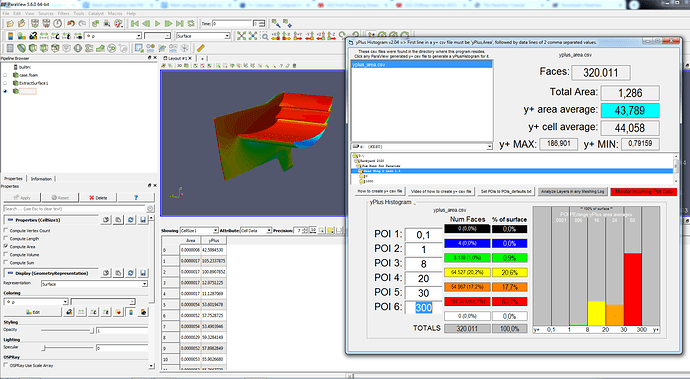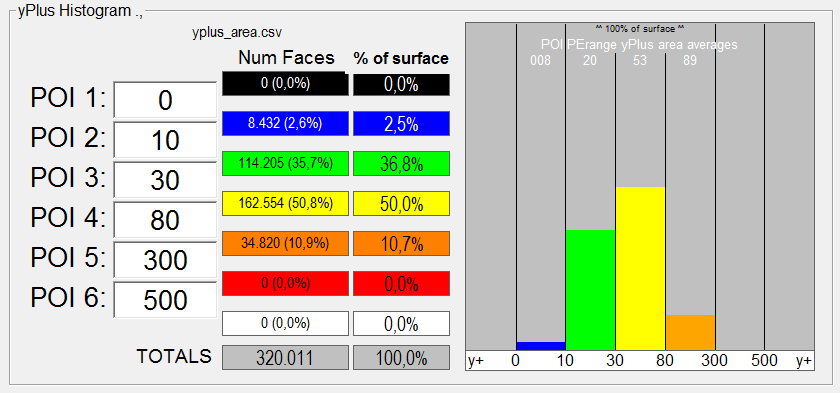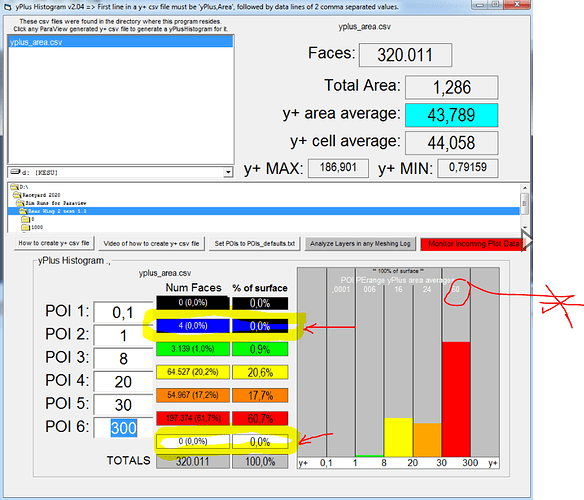I am US eastern time in Florida (UTC-5)
Could you start a sim run on anything right now and see if it gets cancelled immediately with that error?
yep cancelled immediately. I also got logged out randomly
EDIT: Meshing seems to be working though
Since you are getting into it ![]() this is worth reading:
this is worth reading:
And this guy (Aydin) has GREAT CFD videos…
https://www.youtube.com/channel/UCcqQi9LT0ETkRoUu8eYaEkg
thanks a lot!
I still have to download paraview but ill do that now and give it a shot!
Also what version of Paraview are you using? will the histogram work on earlier versions? i was thinking of using version 4.3.1
I also am reading 4.6.2 is good for windows 7 - 64 bit
I am using 5.6.0, but the surface extraction and cell size filters should not have changed in like forever, so you should be fine with what works on your system…
Yep, too deep at this stage for yPlus evaluation, but k3 and w100 looks like a good place to start for you… As long as nut values end up being reasonable in your domain, that should be good for now…
We can go over the cfd-online turbulence calculator usage later if you don’t mind…
Soo i guess the cell size filter has changed because i cannot find it in the filters tab … unless i have to add it somehow
Darn, looks like cellsaize was added in March 2018, is there any way you can load at least 5.5.0-RC3 ![]() :
:
> On 19 March 2018 at 20:14, Scott, W Alan <wascott at sandia.gov> wrote: > >> By far, the easiest way to go is to use ParaView 5.5.0, out within the >> next month. There is a shiny new filter called Cell Size, that will give >> you volumes, surface area, etc of your dataset. It is available in >> Paraview 5.5.0-RC3, from the paraview.org website. Please let us know >> if you find any issues. >> >> >> >> Alan
ill try it. I have no idea which versions will work
What reason wouldn’t you try the latest version?
no reason i just thought it wouldnt be supported with windows 7 … Ill try the new one then
Success I think!
I followed your instructions and it all worked! this is your version 2 histogram system.
Changing to higher POL numbers, confirms that nothing is over 300
VERY GOOD, thank-you for being beta tester of v204 
Actually, once you understand all the numbers you see, you did not need to change the POIs…
Here we see that:
- There were 0 faces over 300 (red pointer)
- There were 4 faces less than 1 and >0.1 (other red pointer)
- The average value in the 30-300 range was 60 (red x)
- The Min of all faces was 0.79 (you find it
 )
) - The Max of all faces was 186.9 (you find it)
SOOOO, you have about 21.5% of surface area (22% of faces) <20, this is what you work on …
My default POIs use 8 and 20 specifically because, between these, is where both wall and full resolution formulas lose their accuracy… So my default POIs will work for BOTH full and wall meshes, of course you can always expand if you wish, but I think my default POIs are good for almost all meshes…
Have fun with ParaView 
Yes Paraview is quite overwhelming but i will enjoy learning more. I found the min max of all faces right after i uploaded the second pic. This histogram is so awesome though. It gives raw data that previously needed to be analyzed through just the surface color changes.
Now with the goal of getting as much Y+ area above 30. I have already changed the first cell height from 50 to 80. I cant increase Y+ much more with 3 layers with a 1.05 expansion ratio, without having a final thickness ratio over 1. I dont really want to have my final layer cell size to be larger then the surface cell size. Any recommendations? will using more layers help with the final layer to surface cell size ratio?
Edit. My calculated Y+ of 100 is equal to 0.002157 which is already larger then the level 9 cell size, which is 0.001953 so i need to find another way to get these results


